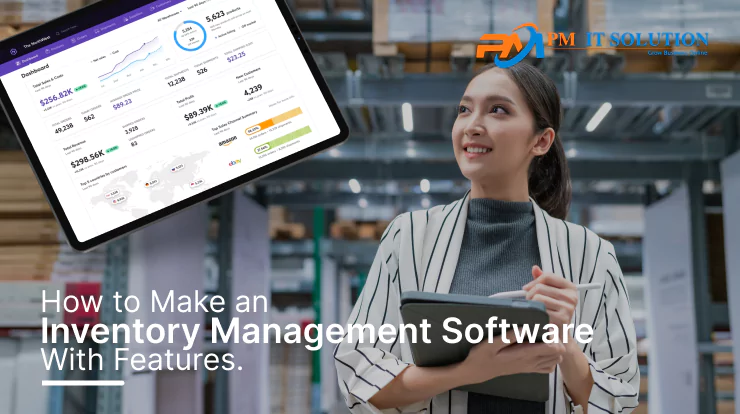Inventory management software is crucial for businesses as it helps streamline the supply chain process. Years of scribbling SKU numbers and being buried in stacks of spreadsheet printouts have finally caught up with you. We know that managing angry consumers as a result of inventory and shipment errors has become the norm. It’s enough. You’re not alone; inventory management is more of an exception than a rule. Nearly half of small businesses still handle or don’t track inventory with pen and paper. It is time to invest and build inventory management software development. Now you must select the software and hardware components that will enable you to run your business effectively and financially. Here are some things to keep in mind as you integrate inventory management hardware and software into your business:
Inventory Control Software:
A firm can only run successfully or thrive with a thorough understanding of inventory, including how much is in stock, where products are located, and how much will be required for future orders. Inventory management software will be the backbone of your inventory management system, tracking, managing, and organizing product sales, material purchases, and other manufacturing operations. It allows your staff to modify their work hours: less time searching for products or manually checking inventories and more time evaluating and preparing for growth.
When Looking For Inventory Management Software, Keep These Three Things in Mind:
What characteristics are critical to your company? It’s easy to get caught up in the gimmicks. Determine what your firm is missing and how an inventory management system can help. Consider how you’ll integrate the software.
- What is your price range?
You probably have a smaller budget as a small business, so getting the most bang for your buck is critical. Knowing what characteristics are important to you goes hand-in-hand with knowing how much something costs. You might locate a cheap program missing critical features, and you’ll need to replace it once your business outgrows the software’s capabilities. That costly risk could cost you more than an initial investment in a more inexpensive, reliable solution.
- How long will it take you to master it?
You’ve had enough downtime and lost person hours due to your current ineffective practices. You don’t want to waste more time or money on prolonged software training. Choose software that is user-friendly and that several staff can quickly learn. Ensure your solution provider offers flexible online and onsite training that fits your employees’ schedules.
Hardware for Inventory Management
If you have the correct hardware, your software will only collect the data it needs to help you perform efficiently and deliver functional analyses. As a result, it’s critical to understand what tools are accessible and the characteristics that best suit your company. The following are hardware components that will help you manage your inventory better:
Bar code scanners:
There are many barcode scanners to pick from, and you must determine which characteristics are most important to your business. A 2D scanner can be the most excellent option if you operate in the retail, healthcare, or hospitality industries.
Thermal printers:
Thermal printers are typically the product of choice when purchasing a printer for your small business. Before investing, it’s still necessary to understand how and where it will be used.
Mobile Computers:
Will you be collecting data outside of your warehouse’s four walls? Then a mobile computer might be right for you. These mobile computers are drop-resistant and have wireless connectivity, more than 30 essential functions, or a touch screen. Knowing the specifications for your small business is vital to select the essential tools to build the right inventory management software. Moving from manual methods to an automated system can save you money too.
The technologies required to build inventory management software:
- C++
- Java
- PHP
- Python
- Flutter
- BootStrap
- MySQL
- SQL Server
Steps to Create Inventory Management Software
Conceptualization:
The first step is knowing what your business does daily and identifying the functional areas involved and which can easily be tracked using data. It is essential to identify areas where your process could benefit from automation. Knowing what you need is crucial, and then designing the best solution for your problems.
What is your business goal?
You should know if you want to build inventory management software to help you get new inventory stored and delivered to customers or if you plan on using an IMS as part of an overall e-commerce strategy. Your primary business goals should be clearly outlined at the beginning of the process. Most importantly, communicating these goals properly to the team of developers during the onboarding process is a must.
Development and testing
Once your requirements are precise for the software, it’s time for developers to write code for the Mobile App Development and any supporting tools and libraries. The developers must also test their developed code to make sure any bugs are corrected before implementation.
Conclusion
An inventory management application can help you track what you have and where you have it. It can also help you put more items in your cart to avoid getting stuck with dead stock. It’s essential to have an inventory management system.
You can always purchase any popular inventory management software solution. However, it is not custom-built according to your unique business needs. That’s why you should have your software built by experts only. PM IT Solution team has expert developers in various areas of development that can develop inventory management software that’s perfect for your business.


